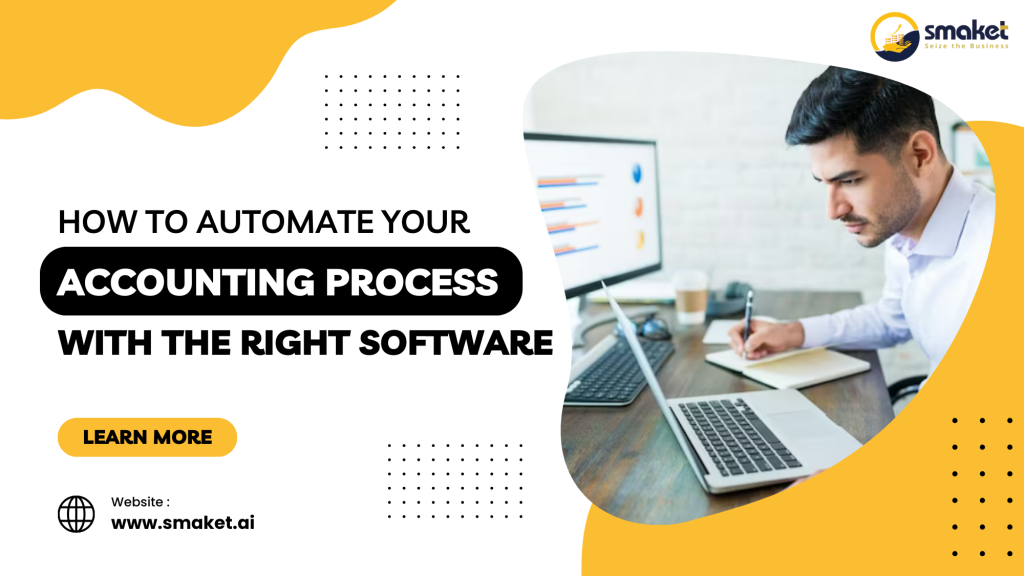Automating your accounting process can be a game-changer for your business. It reduces manual work, minimizes errors, and allows you to focus on growth. With the right Accounting Software, you can streamline tasks like invoicing, expense tracking, payroll, and financial reporting. In this guide, we’ll walk you through the key steps to automate your accounting process effectively and highlight what features to look for in the right software.
1. Why Automate Your Accounting?
A. Time Savings:
Manual accounting tasks are time-consuming. Automation reduces repetitive tasks, freeing up time for strategic business activities.
B. Improved Accuracy:
Automated accounting software minimizes human errors in data entry, calculations, and report generation.
C. Enhanced Financial Management:
Automation provides real-time financial insights, helping businesses make better decisions.
D. Scalability:
As your business grows, automated systems can handle increased volumes of data effortlessly.
Automating your accounting process not only saves time and costs but also enhances the overall efficiency of your business operations.
2. Identify Accounting Tasks to Automate
Before you start automating, list the accounting tasks that take up the most time or are prone to errors. Common tasks to automate include:
– Invoicing and Billing: Automatically generate and send invoices to customers.
– Expense Tracking: Automate the recording of business expenses and categorize them for tax purposes.
– Payroll Management: Automate salary calculations, tax deductions, and employee payments.
– Bank Reconciliation: Automatically match transactions with bank statements for accurate financial records.
– Financial Reporting: Generate real-time financial reports, such as profit and loss statements and balance sheets.
By identifying these tasks, you can focus on implementing automation where it will have the most impact.
3. Key Features to Look for in Accounting Software
Choosing the right software is essential for successful automation. Here are the key features to consider:
a. User-Friendly Interface:
Look for software with an intuitive design and easy navigation to ensure a smooth user experience.
b. Integration Capabilities:
Ensure the software can integrate with other tools you use, such as CRM, ERP, or payment gateways.
c. Automated Invoicing:
Features like recurring billing, payment reminders, and multi-currency support can streamline invoicing.
d. Expense Management:
The ability to automatically track and categorize expenses simplifies tax preparation.
e. Real-Time Reporting:
Get up-to-date financial insights with dynamic dashboards and customizable reports.
f. Data Security:
Make sure the software uses robust encryption and data protection measures to keep your financial information safe.
The right accounting software will offer a combination of these features to help you achieve comprehensive automation.
4. Steps to Automate Your Accounting Process
1. Choose the Right Software
– Research and compare different accounting software solutions.
– Look for one that matches your business needs and budget.
2. Set Up Automation Rules
– Configure automated workflows for tasks like invoicing, payment reminders, and bank reconciliations.
– Establish rules for categorizing expenses and generating reports.
3. Integrate with Other Tools
– Connect your accounting software with payment gateways, CRM, or inventory management systems for seamless data flow.
– Automate data syncing to reduce manual entry across different platforms.
4. Train Your Team
– Provide training for your team to ensure they understand how to use the software effectively.
– Encourage employees to adopt automated processes for tasks like expense submission and invoice approvals.
5. Monitor and Optimize
– Regularly review automated processes to ensure they are functioning correctly.
– Make adjustments based on feedback and changes in business requirements.
Automating your accounting process doesn’t happen overnight. Start with small steps and expand as you become more comfortable with the software’s capabilities.
5. Benefits of Automating Your Accounting Process
- Better Cash Flow Management: Automated invoicing and payment reminders help you get paid faster.
- Reduced Operational Costs: Fewer manual tasks mean lower labor costs and fewer errors that need correction.
- Compliance Assurance: Automated tracking of expenses and tax calculations ensures compliance with financial regulations.
- Data-Driven Decisions: Real-time insights from automated reports allow for quick, informed decision-making.
- Stress-Free Audits: With accurate and organized records, audits become less daunting.
Automated accounting can transform your business by providing a more efficient, accurate, and stress-free financial management process.
Conclusion
Automating your accounting process is essential for modern businesses looking to improve efficiency and accuracy. By identifying key tasks, choosing the right software, and implementing automation strategically, you can save time, reduce costs, and make better financial decisions. Whether you’re a small business owner or managing a growing enterprise, the right accounting software can make a significant impact.
Unlock the full potential of your business finances with Smaket Accounting Software! With features like automated invoicing, expense tracking, and real-time reporting, Smaket helps you stay ahead of your financial management. Try Smaket today and see the difference it makes for your business!

